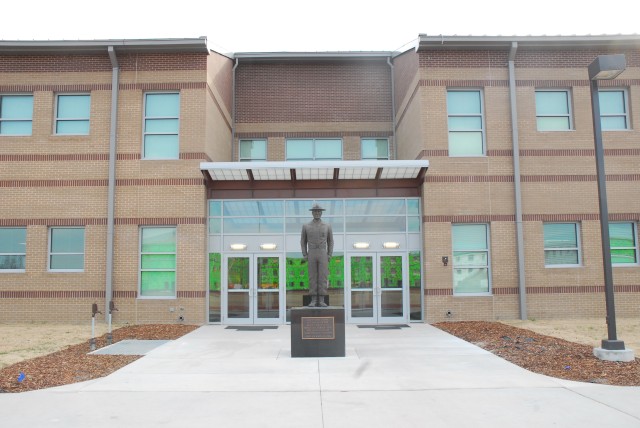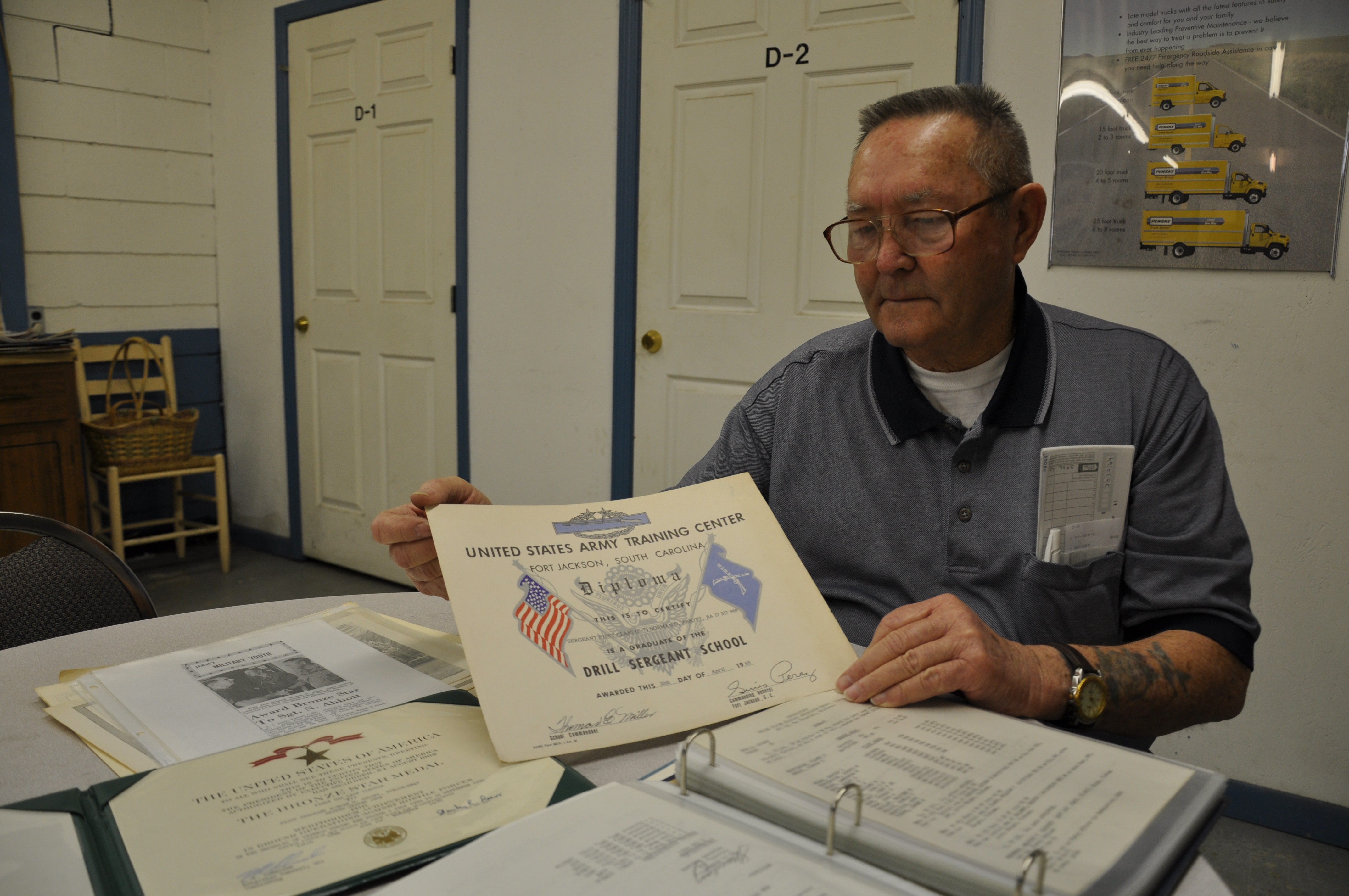FORT JACKSON, S.C. -- If victory starts here, then victory has a new starting line, and it's located at the corner of Kemper and Marion avenues.
That's the site of the new U.S. Army Drill Sergeant School, where the Army's top noncommissioned officers will learn the traditions and heritage of training Soldiers to fight.
The school will officially open during a ribbon cutting ceremony at 2 p.m., Wednesday in front of the drill sergeant statue behind the school.
"It's going to be a great ceremony," said Command Sgt. Maj. Teresa King, commandant of the Drill Sergeant School, "We'll be celebrating drill sergeants of the past, present and future."
The ceremony will showcase some of the richest traditions of the Army's Drill Sergeant Program, which was established in 1964 under the direction of then secretary of the Army, Stephen Ailes.
Ailes, who during the 1960s oversaw the implementation of a series of pilot studies evaluating the effectiveness of the Army's NCO training, compiled a report that recommended the establishment of a school for NCOs who train other NCOs to train Basic Combat Training Soldiers.
Before the program was created, the Army did not have a doctrinal standard for training its trainers. Instead, some of the Army's more seasoned NCOs were selected to develop and recommend training guidance. Committees of 10 to 12 NCOs were tasked to design and rehearse instructions before taking the platform and training their fellow NCOs on the fundamentals of Soldiering.
Per Ailes' direction, in 1964 these committees began transferring responsibility of training to platoon sergeants, who would be called drill sergeants.
These drill sergeants were to be recognized as elite, and a badge was designed to identify them as such.
That year, Fort Jackson was the first Army installation to pilot the Drill Sergeant Course, a five-week course designed to train drill sergeants on the topics of leadership, training management, recruit handling and inspections. The pilot course consisted of 71 NCOs and 15 officers.
Retired 1st Sgt. Norman "Dale" Abbott, who was a drill sergeant student during the first "regular" course, said what he learned at the school was invaluable.
"You had other NCOs that were your instructors who were making sure that you were going in the right path to be a leader of Soldiers," Abbott said. "The most effective tactic they taught us to get Soldiers to do what you want them to do is to lead by example, to do what needs to be done, don't cut corners and insist on excellence."
Fort Jackson's Drill Sergeant Course became the model for five other major Basic Combat Training installations - Fort Dix, N.J., Fort Knox, Ky., Fort Ord, Calif., Fort Leonard Wood, Mo., and Fort Polk, La. - where drill sergeant schools were established by October 1964.
Within its first year, the course was extended from five weeks to six, and over the years it has morphed into today's 10-week course.
The Fort Jackson Drill Sergeant School first saw foreigners graduate the course in 1971, with eight Iranian students. Women were allowed to attend the Drill Sergeant School beginning in 1972.
During the last 47 years, the Drill Sergeant School has seen many more changes, to include revisions to its program of instruction, its building location, pay incentives for graduates, and on top of all things, even its campaign hat.
In 2008, the Fort Jackson Drill Sergeant School became the single source for training Army drill sergeants. All other drill sergeant schools closed in accordance with the 2005 Base Realignment and Closure recommendation which called for the consolidation of drill sergeant training. That was also the year when Fort Jackson leaders broke ground for the new school.
Some Fort Jackson Drill Sergeant School graduates who have been noted in the pages of history, are Sgt. 1st Class Harold Whiteside, the first honor graduate of the pilot course; Medal of Honor recipient Master Sgt. John Baker who graduated DSS in 1968; Sgt. Diane Oppedal, the first female honor graduate; Command Sgt. Maj. William Hyman, the first commandant; Command Sgt. Maj. Chester Perry, the first black commandant in 1995; 1st Sgt. Letricia Wagner, the first female first sergeant in the program; and King, who in 2009 became the school's first female commandant.
Several of the first Drill Sergeant School trainers and other Army leaders who were key in the establishment of the program are expected to attend next week's ribbon cutting ceremony, which is open to the public. King said she encourages Fort Jackson community members to attend the historical event.
"A handful of Soldiers who started the program, started the school, and pushed for the building of the school and a new home for drill sergeants, will be there," King said. "They have a lot of pride in this institution. So we want to honor them and celebrate the spirit of being a drill sergeant and what drill sergeants mean to the Army."




Social Sharing